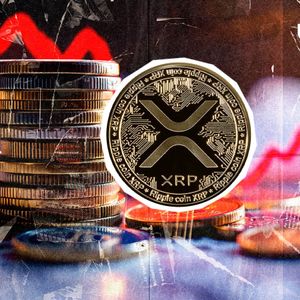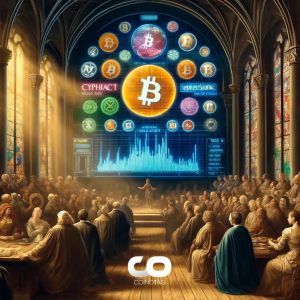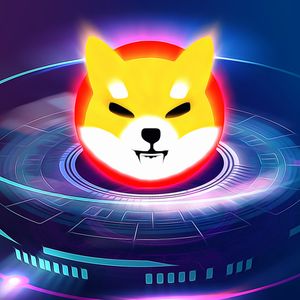NFTs: Unlocking the Revolutionary Future of Digital Infrastructure in Web3
6 min read
BitcoinWorld NFTs: Unlocking the Revolutionary Future of Digital Infrastructure in Web3 For many, the term NFTs still conjures images of expensive digital art or speculative collectibles. Recent headlines often focus on market fluctuations, leading some to question their long-term value. However, a significant shift is quietly underway beneath the surface. Industry leaders like Charu Sethi, the Chief Marketing Officer at Unique Network – a company specializing in blockchain infrastructure specifically for NFTs – are championing a different narrative: NFTs are rapidly evolving into foundational components, becoming essential digital infrastructure for the next wave of digital innovation. Are We Underestimating the True Potential of NFTs? Charu Sethi’s perspective, shared in a recent opinion piece, challenges the prevailing view that the perceived ‘decline’ in the speculative NFT market signals the end of their relevance. Instead, she posits that this period marks a crucial transition. As the initial hype around profile pictures and collectibles cools, the focus is shifting towards the inherent capabilities and NFT Utility that these tokens offer. They are moving beyond being mere assets you trade and flip, becoming vital system primitives within decentralized environments. Think of it like the early internet. Initially, it might have seemed like just a place for static websites. But it quickly evolved into the fundamental layer upon which e-commerce, social media, streaming, and countless other services were built. Sethi argues that NFTs are undergoing a similar transformation, shedding their image purely as speculative items and establishing themselves as foundational elements for complex digital ecosystems. NFT Utility: More Than Just JPEGs The core of this evolution lies in expanding the concept of NFT Utility . What utility are we talking about? It’s about leveraging the unique, non-fungible nature of these tokens to represent ownership, identity, access rights, and complex digital states in a verifiable and decentralized manner. Sethi highlights that this utility is now extending into critical areas: Gaming: Moving beyond simple in-game items to representing player identity, progress, achievements, and even components of the game world itself. Artificial Intelligence (AI): Enabling AI agents to own assets, represent unique datasets, or even act as unique, tradable digital entities. Web3: Serving as the backbone for decentralized identity, verifiable credentials, digital property rights, and complex contractual logic within decentralized applications. This expanded utility is precisely what Sethi believes is replacing the reliance on speculative value. The intrinsic function and capability of the NFT become more important than its potential resale price on a secondary market. How Are NFTs Becoming Digital Infrastructure? To understand how NFTs function as digital infrastructure , consider their properties. Unlike fungible tokens (like Bitcoin or Ether, where one unit is identical to another), each NFT is unique. This uniqueness, combined with blockchain’s immutability and transparency, allows NFTs to serve as: Verifiable Ownership Records: A secure and transparent way to prove ownership of digital or even physical assets. Access Control Mechanisms: Granting or restricting access to digital content, events, or services based on NFT ownership. Representations of Identity: Acting as decentralized digital identities or verifiable credentials. Containers for Data and Logic: NFTs can store metadata, link to external data, and even embed or trigger specific smart contract logic. Sethi envisions a future where NFTs serve as fundamental layers for asset ownership, transaction logic, and even the representation of AI agents within decentralized systems. This positions them not just as items within an application, but as part of the underlying framework upon which applications are built – true Web3 Infrastructure . Web3 Infrastructure: The Role of NFTs in a Decentralized Future Web3 Infrastructure aims to build a more decentralized, user-controlled internet. NFTs are crucial to this vision because they provide a native digital primitive for representing unique things and relationships in a decentralized way. In Web3, NFTs can: Represent your decentralized identity and reputation. Tokenize real-world assets, allowing for fractional ownership and easier transfer. Manage digital rights and licenses for content creators. Enable decentralized governance by representing voting rights or membership in a DAO. Unique Network, as a blockchain infrastructure provider focused on NFTs , is directly contributing to building the foundational layers necessary for this future. By providing tools and protocols that make it easier to create, manage, and utilize complex NFTs, they are helping pave the way for NFTs to become seamless, invisible parts of the Web3 Infrastructure users interact with daily. The Transformation of Blockchain Gaming Through NFTs Perhaps one of the most visible areas where NFT Utility is flourishing is in Blockchain Gaming . Early play-to-earn models often focused heavily on the speculative value of in-game NFT assets. However, the space is maturing. Sethi’s perspective aligns with the evolving view in Blockchain Gaming , where NFTs are becoming integral to the core gameplay experience, not just an economic layer on top. Examples include: True Asset Ownership: Players genuinely own their in-game items, characters, and even virtual land, allowing them to trade, sell, or use them across different compatible games. Persistent Identity and Progress: NFTs can represent a player’s unique identity and track their progress or achievements across various gaming experiences. Dynamic and Evolving Assets: NFTs can change based on player actions, game events, or external data, adding depth and complexity to gameplay. Interoperability: While still nascent, the dream is for NFT assets to be usable across different games and platforms, creating a truly interconnected gaming metaverse. This integration moves NFTs from being just collectibles within a game to being fundamental components of the game’s economy, mechanics, and player identity, solidifying their role in Blockchain Gaming infrastructure. AI and NFTs: A Future Synergy? The intersection of AI and NFTs opens up fascinating possibilities, pushing the boundaries of both technologies. Sethi’s mention of NFTs serving as layers for AI agents hints at a future where AI entities can interact with the digital world in novel ways. Consider: AI Agent Ownership: An AI could own an NFT representing data, a digital asset, or even a stake in a decentralized autonomous organization (DAO). Unique AI Creations: AI could generate unique digital art, music, or even code, which is then tokenized as an NFT, proving its origin and ownership. Data Tokenization: Specific datasets used to train AI models could be tokenized as NFTs, allowing for verifiable ownership, licensing, or fractional use. AI-Powered Dynamic NFTs: NFTs whose properties evolve based on AI analysis of data or interactions. The combination of AI and NFTs suggests a future where decentralized systems can incorporate intelligent, autonomous agents that own assets and participate in the digital economy, all verifiable and managed on the blockchain via NFTs. Benefits and Challenges of the NFT Evolution This shift towards NFTs as digital infrastructure brings significant benefits: True Digital Ownership: Empowering users with verifiable ownership over their digital assets. Enhanced Interoperability: The potential for assets and identities to move across different platforms and applications. New Economic Models: Enabling creator royalties, fractional ownership, and novel ways to monetize digital interactions and assets. Increased Transparency and Security: Leveraging blockchain’s inherent properties for secure and transparent record-keeping. Building Decentralized Ecosystems: Providing fundamental building blocks for a more decentralized internet. However, challenges remain: Scalability: Ensuring blockchain networks can handle the transaction volume required for widespread infrastructure use. User Experience: Making the technology accessible and easy to use for mainstream users. Regulatory Clarity: Navigating the evolving legal landscape surrounding digital assets. Technical Complexity: Developing robust and secure infrastructure layers and smart contracts. Shifting Perception: Overcoming the public perception of NFTs as purely speculative tools. Conclusion: The Unfolding Future of NFTs Charu Sethi’s insights from Unique Network offer a compelling look beyond the current market narrative surrounding NFTs . While speculation captured initial attention, the real, long-term value lies in their potential as fundamental digital infrastructure . As they evolve, NFTs are poised to become invisible yet essential components powering the future of Web3 , revolutionizing Blockchain Gaming , and enabling new synergies with AI and NFTs . This shift from speculative asset to utility-driven primitive is not just a trend; it’s the foundation for a more decentralized, owner-centric, and functionally rich digital world. The quiet work of building this infrastructure is happening now, laying the groundwork for the next phase of digital evolution. To learn more about the latest explore our article on key developments shaping NFTs and Web3 infrastructure. This post NFTs: Unlocking the Revolutionary Future of Digital Infrastructure in Web3 first appeared on BitcoinWorld and is written by Editorial Team

Source: Bitcoin World



